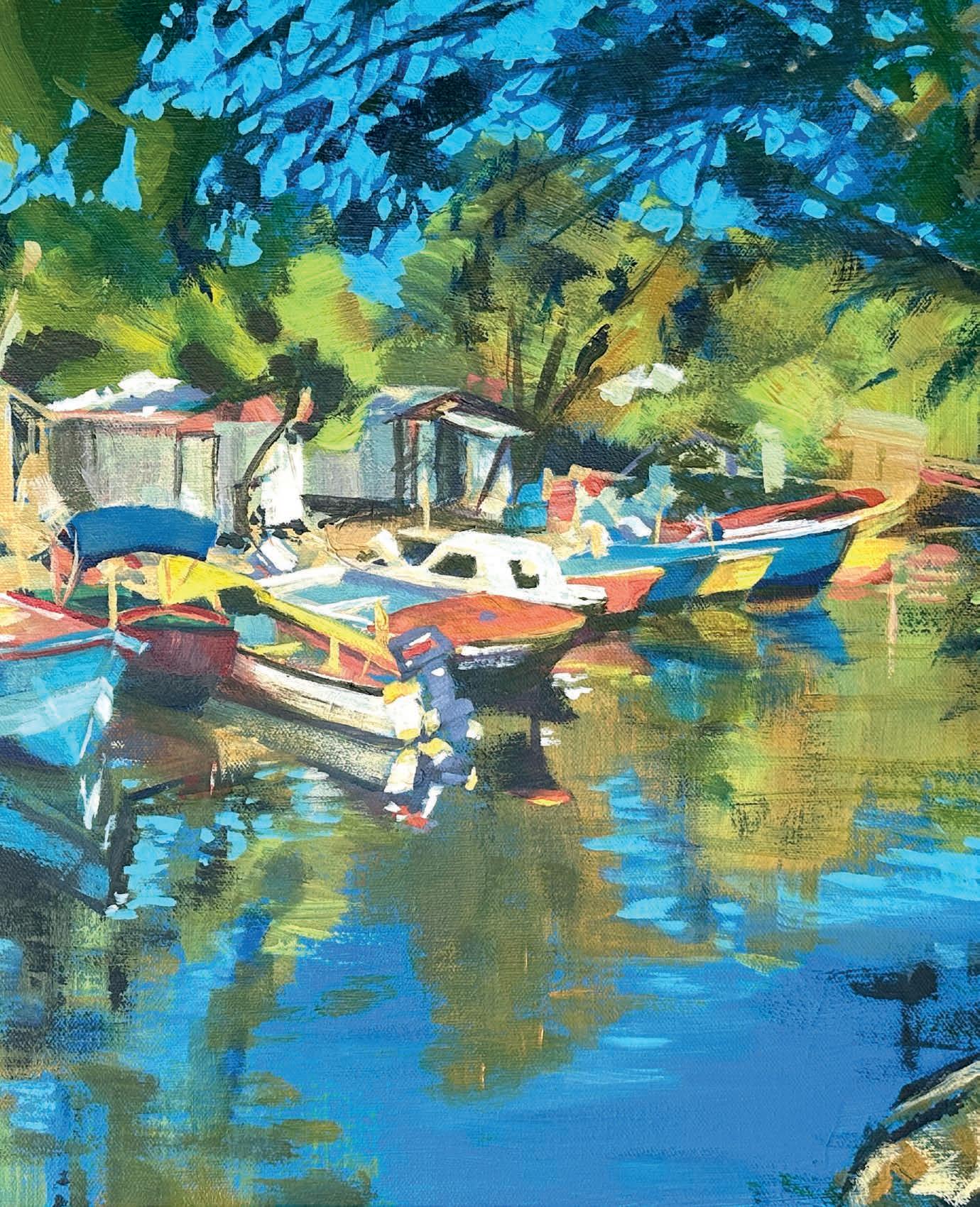
















































This artist’s oil paintings invite a deeper conversation between subject and viewer, says Sara Mumtaz ▸


Irish artist ANGE BELL is at the top of her game thanks to her steely determination, and the love and support of her family. Niki Browes finds out more ▸


In the early 20th century, Brazil was grappling with its artistic identity, wanting to be modern but reluctant to let go of tradition. A new exhibition explores the influence of 10 artists who embraced it – and changed the game for Brazilian art. By Martha Alexander

SUSAN CLARE creates this fun painting of traditional Jamaican fishing boats using bright and blocky acrylic brushwork STEP-BY-STEP

Taking a drive along the coast of Jamaica, you pass picturesque fishing villages perched on the shoreline or river estuaries. Small-scale fisheries are under threat from tourism development and competition from fishing industry giants but they impact the environment far less than largescale fishing methods. Also, staying true to my life-long mission of raising awareness of marine issues, and since plastics form one of the largest threats our seas face, worldwide, I’m doing a tiny bit to help, by opting for the new bio-based acrylic paints (which have half the plastic content, of
regular acrylic paint).
I chose this photo of fishing vessels moored in a river-mouth, where they spend the day, safe from coastal squalls. I love the scene’s composition, framed by trees and water. The ramshackle fishermen’s huts are just visible behind the string of fishing vessels. Primary colours draw the eye into the scene. I sought to capture the feeling of sunshine and tranquility in a fun, bright painting, using playful, bold and blocky brushwork. By mixing and blending minimally and working with quality paints, the colours stay clean and bright. A limited palette helps to harmonise the view. susanclare.art


Paints
Liquitex Heavy B ody
Acrylic: Light Blue
Permanent, Brilliant Yellow Green
Liquitex Bio-based Heavy
Acrylic: Quinacridone
Crimson, Yellow Medium
Azo, Phthalo Blue
Golden: Yellow Ochre, Titanium White
Brushes
Large flat brushes: Liquitex
Freestyle: 2 inch, 1 inch
Winsor & Newton short flat bright 22 and 12
Support
Stretched canvas 41x51cm
Palette, water pot, paper towel ▸

This painting emerged from years and years of reflection on aesthetic and philosophy. The process was time-consuming and challenging but it was worth it because, in the end, it won the MiniARTures Award 2024.
Phototaxis is the latest development of a very long and personal process that started when I began to exhibit in London many years ago. From the very outset, my innermost intention was to immortalise my little muse (and wife) in the land of her ancestors and if possible in the most enlightening manner. Jo has always been obsessed by her English origins so I’ve tried to create a thought-provoking painting for her, in which she would be in the centre of a typical London scene. Piccadilly was the perfect spot to highlight the circus and bring in the illusion of a meaning we are all looking for.
What I like about the term ‘Phototaxis’ is that it can be used to describe human dependence on light as well as other species. As a miniaturist, I often reduce human figures to the size of insects. The hesitant attitude of Jo, the main character, caught between movement and stillness is an invitation for the viewer to take a while to consider the manipulative nature of light and the chaos of the urban environment.
Hyperrealism is simply realism in the hands of perfectionists. To tell you the truth, depicting the world painstakingly is not an option for me. I’m intrinsically driven by an urge to do so. It may sound paradoxical to put it this way, but the truth is that I really have no control over it. stefannandancee.com ▫